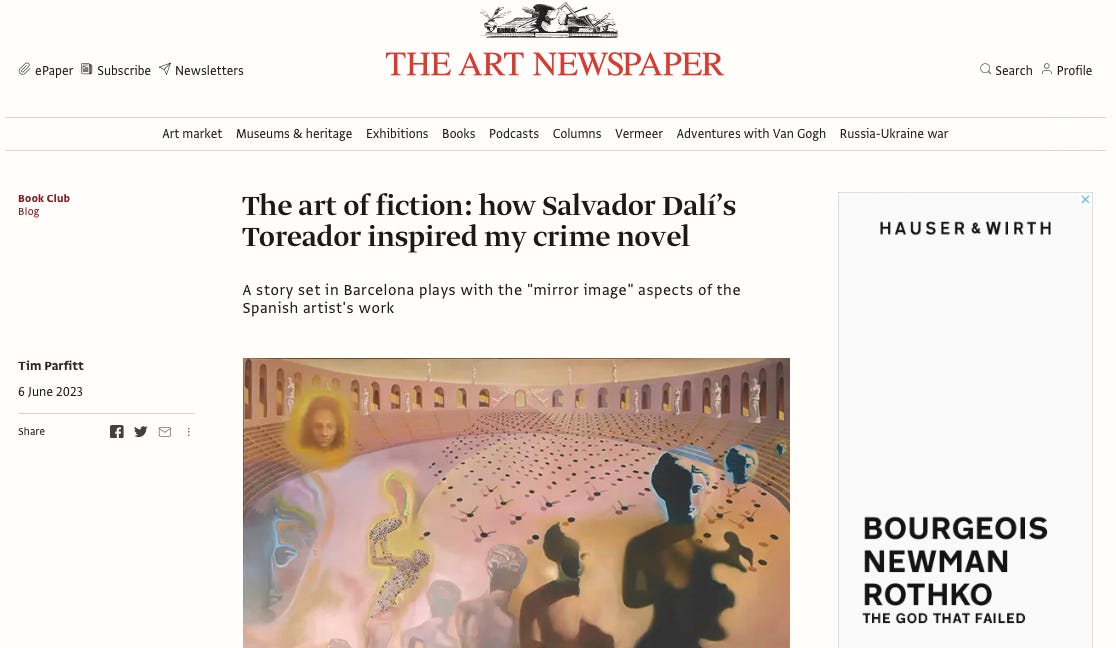When I was first sent to work in Madrid in the late 1980s, I remember being struck by the way Spaniards left things until the last minute. The mañana, mañana attitude was very real at the time. As I worked in magazine publishing, and had come from Vogue House in London where everything was planned and scheduled according to strict timetables, the ‘leaving-things-until-the-last-minute’ mentality in Madrid was even more acute.
The thing is, however, most Spaniards don’t actually believe they’re leaving anything until the last minute. There might be a deadline for something, but that’s all it is: a deadline; a ‘date’. Many people here believe that it doesn’t really matter when you start to prepare for something, as long you meet that deadline (and over the years I’ve become more like them). I wrote this passage about it in my book, A Load of Bull - An Englishman’s Adventures in Madrid:
To get us all off to a good start, Alfonso suddenly stretched his arms out wide and twisted his palms to face each other, as if holding up an invisible, long box. This, we were told, was his imaginary ‘time-line’. As Francisco translated, Alfonso started to explain with simple karate-chop gestures along this time-line, that when a road or a building was made, the British started here and finished there. The Spanish, however, also finished exactly where (or when) the British finished, (demonstrated by another karate-chop at the same point) but – and this seemed to be the key to it all – the Spanish started here, he beamed, karate-chopping half-way along the line, and still managed to get to the same end at the same time as the Brits.
Over the years, I thought that this ‘last minute’ habit had largely disappeared, but I was reminded about it on Friday after the left-wing Podemos group, along with 14 other left-wing groups (some of whom had already confirmed), finally agreed to form part of the Sumar alliance led by Yolanda Díaz, for the 23 July general election in Spain, just hours before the expiry of a deadline for all parties to register. Sumar itself was then also officially registered on Friday as a political group to compete in the election.
The deal signed late on Friday apparently ‘ended days of intense negotiations’, and while this Substack blog is not designed to be political, I think it’s a good thing. If it only simplifies the 14+ left-wing ‘parties’ under one umbrella, then it’s a good thing. That way we can also avoid the Life of Brian-style nonsense of the Judean People’s Front not agreeing with the Judean Popular People’s Front, let alone the People’s Front of Judea or the Judean Popular Front. If you follow me …
The Barcelona Connection - research & dates for diary
The Art Newspaper recently asked me to write a short piece about my research on Salvador Dalí for The Barcelona Connection, which can be found here. They then shared it on Facebook, Twitter and Linked in, and included it in their Book Club blog mailing, for which I am very grateful …
To continue with the research journey that I started in last week’s letter with Chapter 1, here are the images to accompany Chapter 2 …
This, I decided, is the fictional country home of Jaume and Montse, the Marqueses de Guíxols, not far from La Bisbal d’Empordà, and where the painting is discovered in their cellar. Also pictured is the painting that Benjamin refers to as The Face in the book, normally on display at the Figueres Museum - as the painting that Jaume Guíxols uncovers is very similar.

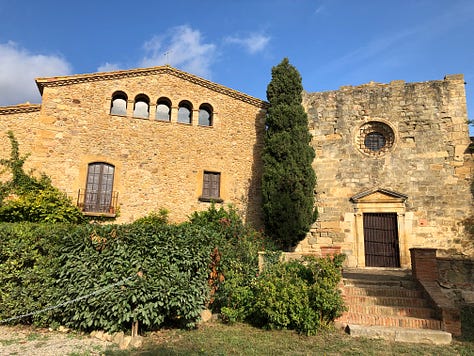
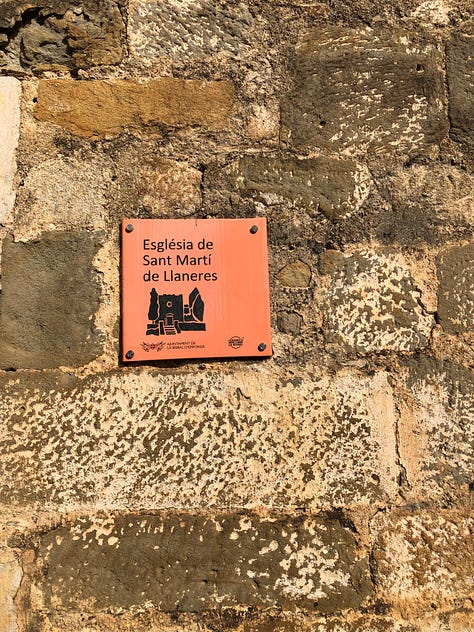
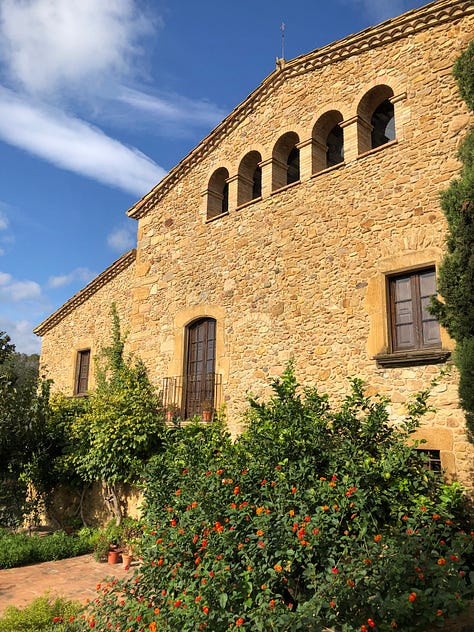

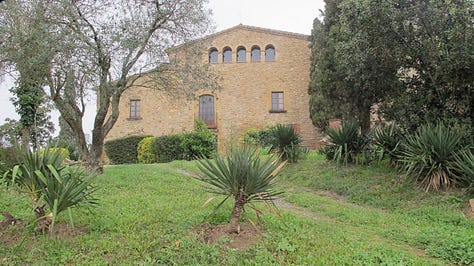
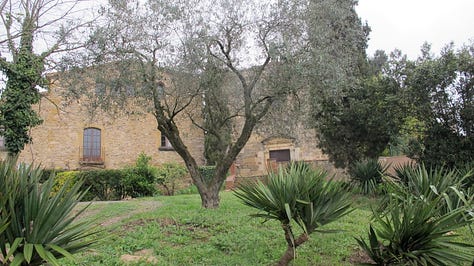
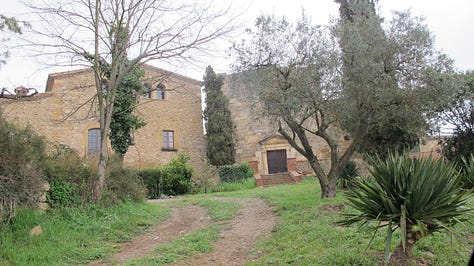

I first found this house back in March 2013, over 10 years ago, when I was writing The Barcelona Connection as a film script. I then revisited the area in November last year, as I was finally completing the novel … and I even found that the house was for sale (although I’m not sure if it has now been sold). If I had the money, I would buy it.
It’s an old 16th century rectory, in a beautiful setting, which originally served as the residence of the parish priest of the Església de Sant Martí de Llaneres.
The church, its adjoining rectory and Can Torrò farmhouse (or masia), are located not far from the small village and castle of ‘Castell d’Empordà’ (more about that in a future post). It has been documented since the year 1101, although the current building was built in 1584. It is described as being ‘of Renaissance type’, called at the time ‘Roman style’.
Castell d'Empordà was the name used for the whole of the town, whose origin arose from the castle of the Counts of Empúries, located on the top of the hill.
Next week, Chapters 3 & 4 …
Have you read the book yet? Here’s a latest review and there are more each day on Amazon and Goodreads. Click here to choose where to order it from!
Don’t forget these dates for your diary if you are in Barcelona or Madrid:
On Thursday 29 June at 7pm, I’m going to be doing an official presentation of the book in the company of the British Consul in Catalonia, Lloyd Milen, MBE. The event is taking place at the Alibri bookshop on the Carrer de Balmes, 26 - and it would be wonderful to see you there. Further info can be found here: https://www.alibri.es/events/2119.
It is now also confirmed that I will be doing an event at The Secret Kingdoms bookstore in Madrid on Thursday 28 September. More details on that in due course.




